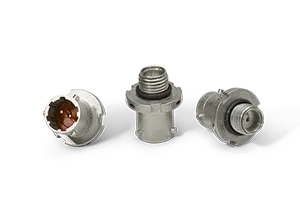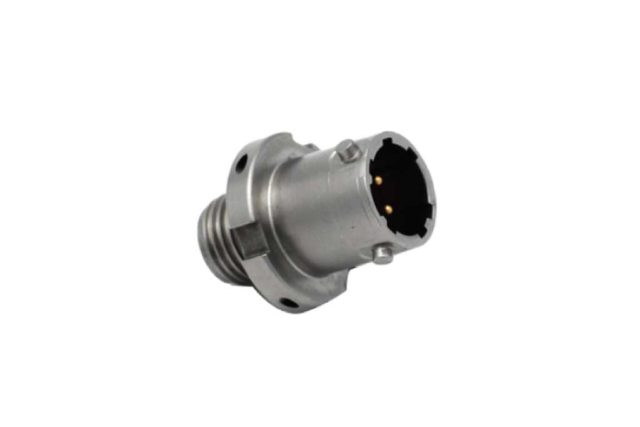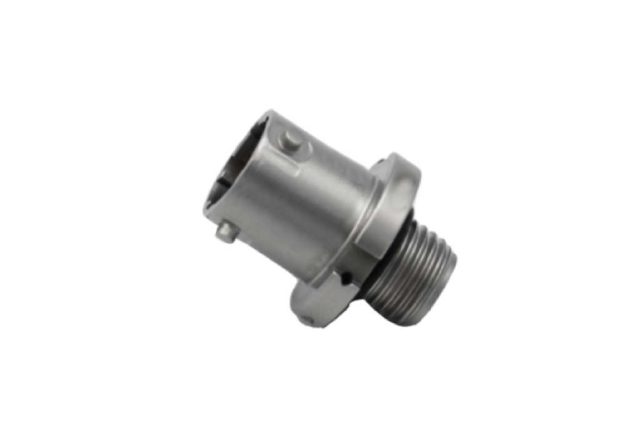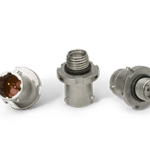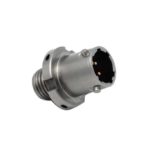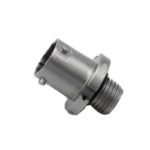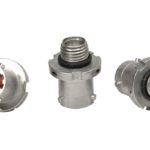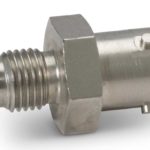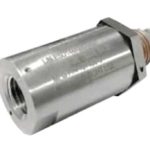Space Standard Initiator
Product Description
Our Space Standard Initiator’s critical purpose is to translate electrical stimulus into a pyrotechnic action or train and it has been designed to meet or exceed the performance requirements of the original NASA Standard Initiator Specification drawing SEB 26100001. Like the NASA Standard Initiator (NSI), ours is also a two-pin electrically activated, hot wire+ electro-explosive designed to meet the requirements of all space missions, from lunar to Mars and beyond.
In mission-critical space and defense applications, our Space Standard Initiator provides a fast-acting, small-package energy source for converting electrical signals to a gas pressure output or high temperature flame and hot particles. Our initiator has an excellent safety record. Inadvertent activation is prevented by its 1-amp/1-watt 5 minute no-fire capability and high resistance to stray energy (transients, radio frequency, electromagnetic) as well as electrostatic discharges.
Our 103377-500 initiators are commercial and include a standard Certificate of Conformance*.
In addition we have our 103377-501, our European Standard Initiator (ESI)
The 103377-501 Initiator meets the pressure output performance of the European Space Agency (ESA) and meets the performance characteristics of the NASA Standard Initiator. The 103377-501 was developed and qualified for the Ariane 6 launch vehicle and used to ignite the turbo pump starter. With its high temperature and pressure capability, the 103377-501 is suitable for use on many additional applications.
Beginning in 1990, the 103377-501 pedigree originates with the Delta launch vehicle and continues to be used today on many other launch vehicles. This initiator also leverages the original 103377 Family of initiators qualified to MIL-I-23659C and updated MIL-DTL-23659F, as well as MIL-STD-1512.
Key Features
- Wide operating temperature range
- Inconel body provides high level of back pressure sealing
- Hermetically sealed
- Proven reliability
- Space rated materials
- Standard electrical/mechanical interface
- Space Flight Heritage
How a Space Standard Initiator Works
Using a two-pin, single bridge-wire design, the initiator is engineered for maximum efficiency in harsh space environments. The initiator is electrically actuated by a minimum 3.5 amps application of all-fire current, producing a hot flame and gas output pressure of 525 to 775 psig within 10 milliseconds in a 10cc closed volume. In addition, the initiator is also designed to meet or exceed the performance requirements of the NASA Standard Initiator.
When your mission includes million dollar systems… you can rely upon our space electric initiators to deliver.
Space Qualified
Our Space Standard Initiators are designed for consistent reliability with a heritage dating back to the original Atlas Standard Initiator. We have engineered hundreds of variations of our high-quality, highly reliable initiators in the 103377 family. In particular, our 103377-500 meets stringent test and flight requirements while maintaining low cost and ease of availability.
*Any additional quality flow downs or added test requirements will be quoted separately and are not included in standard pricing or lead-time.
Specifications
- All-Fire
3.5 amps - No-Fire
>5 Minutes @ 1 amp/1 watt - Bridgewire Resistance
1.05 ± 0.10 ohms - Insulation Resistance
2 Megaohms min. @500VDC - Electrostatic Discharge
25 KV /500pF / 5000 ohm - Operating Temperature
-260 °F to +300 °F - Hermetic Sealing
1 x 10-6 cc/sec HE at 1 atm differential - Thermal Cycling
-260 °F to +300 °F - Shock
2600 G’s - Vibration (Random)
-50.0 g RMS, 3 minutes/axis - Thermal Vacuum
At 10-6 Torr from +300 °F to -260 °F for 2 hours - Electrical Connection
MS3116P8-2S - Output Thread
-3/8-24UNJF-3A - Torque
150 inch pounds
FAQ's
-
What is the All Fire Current?
3.5Amp
-
What temperature (low) can it operate?
NASA Standard Initiator has been tested to -251C
-
What is a NASA Standard Initiator?
A NASA Standard Initiator (NSI) critical purpose is to translate electrical stimulus into a pyrotechnic action or train. It is an electric pyrotechnic device used to actuate small components or the initiate reactions in larger explosive charges.
